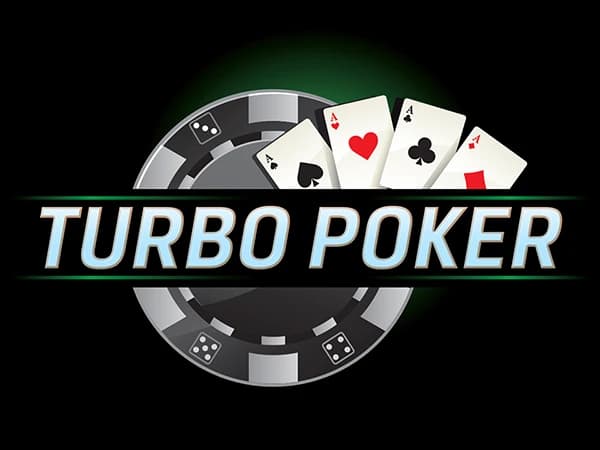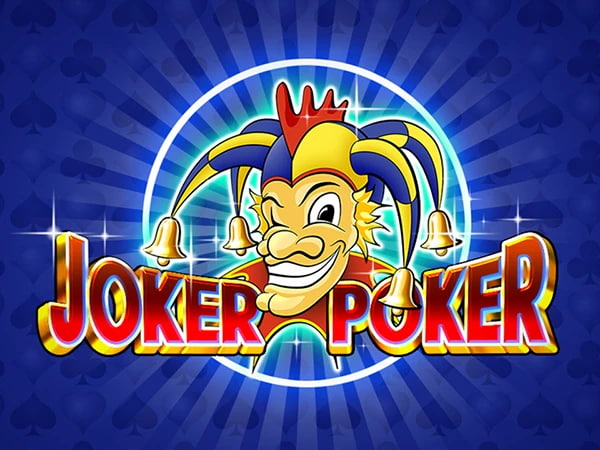Top 10 Poker Tips for Intermediate Players
As the stakes rise, so does the complexity of Poker. This guide is tailored for players like you, who have a solid grasp of the game but are hungry for that extra edge. Dive into a blend of psychological tactics, from the importance of avoiding tilting to the subtleties of recognising patterns in your opponents’ playing style. Further hone your skills with insights into making the most of your pre-flop strategy and the significance of raising more often.
After that, take your newfound skills to the best online Poker games for intermediate players at the most popular Poker sites today.
Understand Poker Variance
As an intermediate player, you know all the rules and the mathematics involved in Poker, so it’s time to start thinking about how they go hand in hand with variance. This is the difference in the set of results you want to see in the long-term and your results in the short term. In other words, even if you have your strategy, positions, and odds figured out, it’s important to remember that there are ups and downs in Poker— not every game will be a winning one and that’s okay.
You can experience periods when you’re mostly losing or winning, but that’s just part of the statistics. Remember to focus on your long-term goals and don’t let the negative variance lead you to tilt.
Raise More Often
When you’re just starting out, you may not be raising often as you’re still learning the rules and trying to get the hang of it. So now that you’ve reached a new level and your confidence has increased, it’s time to start raising more often.
You can use this tactic when you know you’ve got a strong hand or even to drive other players away if you think the timing is right.
Pay Attention to the Patterns
By now, you already know the pattern of your own winning strategy. But what about the strategy of other players? Just like you, they have playing patterns and if you’re observant enough, you can learn them and use them to your advantage.
This is the next level in reading your opponents and it’s much easier to pick up on their strategy in a single game when you’ve already got some practice.
Don’t Be Afraid to Take Risks
Use your newfound knowledge and confidence to improve your chances of winning! If you’re comfortable with your abilities, it’s time to start playing lower hands such as Pairs to confuse the other players or if there’s enough money in the pot.
Of course, you shouldn’t be taking risks all the time. Evaluate the situation and try to calculate when a risk is more likely to pay off. This is just like when you were learning to bluff effectively as a beginner— it takes practice and a little bit of luck. So even if your risk fails, remember to shift your focus on the long-term results, as we mentioned before.
Focus on Your Pre-flop Strategy
As you already know, the starting hands are the most important in Poker. Making the right decision during pre-flop can have a significant impact on how the rest of the game goes. Since this is one of the most underrated areas in Poker, you may even see some advanced players glossing over the pre-flop strategy.
The way you play will depend on your position. For example, the first player to bet (early position) doesn’t have any chance to see what everyone else will do, they just act based on the strength of their hand. On the other hand, the player on the right side of the dealer (late position) sees how everybody’s betting, allowing them to come up with a sound pre-flop strategy.
That’s why you need to assess your position as well as study pre-flop charts to come up with the best strategy. You should also avoid limping and keep in mind what we said about raising more— this is a situation where that tip comes in handy.
Avoid Tilting
Tilting is when you start playing Poker in a frustrated or angry state of mind. This extra stress can impact the way you make decisions during your game and set you on a loosing streak, which can, in turn, contribute to more tilting.
Not only can this take a toll on your confidence, but also on your overall mood and finances. The best way to avoid tilting is to pay attention to how you’re feeling and acting when you start playing. Are you angry because you got some bad hands? Are you making snap decisions without paying attention to what’s going on at the table?
It may be time to take a step back and return to the game when you’re feeling better. Try to remember what we mentioned about long-term results and strategies and that Poker is supposed to be fun and enjoyable.
Play the Style that Fits the Table Dynamics
Beginners are often told that they should play aggressively because they tend to be scared to make moves. Does the same apply to intermediate players? Well, when you’ve already got some practice with different playing styles, a better strategy would be to try to match the dynamics of the table.
So, once again, you need to pay attention to what other players are doing. If they’re being passive, then you should play aggressively. Go for the blinds while they wait for better hands and you may get the upper hand. But if the table is full of people playing a loose game, then you’ll want to go with a tighter strategy. They’re more likely to make a mistake when they’re playing really loose, so you can swoop in when they have weaker hands.
Don’t Stay in a Hand Too Long
We’re all guilty of getting a great hand then falling in love with it and not wanting to give it up. This can very rarely work out in your favour as Poker demands a lot of flexibility. Instead of holding onto a hand as tightly as possible, you should focus more on how other players are betting.
If the situation calls for a flop, then you should do that instead of betting aggressively with that one hand. You can get stuck with it and ignore other bets, but this will only make it easier for your opponents to exploit you.
Don’t Overestimate Yourself
The increase in confidence when you’re going from beginner to intermediate can also come with more ego. Finally getting over the learning curve, then playing against beginners and realising how good you are now, can leave you thinking you’ve become an expert.
While it’s good to believe in yourself, overestimating your abilities can stump your learning process and leave no room for improving your skills. Remember that your goal hasn’t changed since you started playing— it’s to be the best player you can be, so keep reading resources and stay open to learning!
Find the Right Games
Figuring out how to find the right game can make each session more enjoyable and also raise your winning rate. To find the best games for yourself, you should think about what your goals are. If you’re just out to make some money, then you should go for cash games. If you want to get into the community more and practise, consider joining some tournaments.
Aside from the type of games you’re playing, you should also think about the table you’re sitting at. Ideally, the other players should be of a similar skill set. Playing with beginners may be an easy way to win, but it won’t do much for your skills, while playing with advanced players can only leave you feeling frustrated. Striking the right balance between the two can help you improve and make the experience more fun. So give each table you join around 30 minutes to see what it’s like, then stay or leave based on how you’re feeling.
Best Poker Games for Intermediate Players
Keep learning and take your game to the next level with our expert Poker guide. Here, you’ll find more advanced tips for your strategy, and games that challenge you in new ways. You can also check out our Poker Strategy page to see if there are any gaps in your strategy that you need to fill.
Turbo Poker by Wazdan

Enjoy a turbo-charged game of classic Poker! The pace is perfect for intermediate players who want to work on their decision-making speed. You will need to choose whether you’re holding or folding after the cards are dealt, and then you’ll see if you’ve won.
And if you’re lucky enough to get a Royal Flush, you can use the gamble option, where you can turn your win into double or nothing! The volatility is high and the RTP is 96.94%, making this video Poker game a challenge you’ll love to conquer.
Bet on Poker Live by Playtech

In this version of live Poker, you have to make bets on predicted outcomes. There are three betting rounds, and a lot of combos possible, including Single, Double, and Triple. This game is great for exercising and deepening your understanding of Poker hands and ranges, as well as on possible outcomes.
The goal isn’t to play against other players or the dealer, but to guess which hand is going to win correctly . Strategic thinking like this can give you the upper hand and help you figure out patterns the next time you’re facing off against other players.
High Card Flush by Felt

If you’re looking for something a little different but still challenging, then we have the ideal game for you. The goal of High Card Flush (97.36% RTP) is to get as many cards of the same suit as possible. The biggest appeal of the game is that there are side bets you can place to potentially increase your winnings.
On top of that, the max potential win of 8,000x your bet will draw in any player looking for some serious action.
6+ Poker by BetGames

Switch things up further with a 36-card deck instead of the standard pack of 52! All the twos, threes, fours, and fives are eliminated allowing you to go for bigger winning combos. Since a lot of the deck is missing, the hand rankings are changed, too.
Flushes rank higher than Full Houses, and Three-of-a-Kinds can beat Straights! Challenge yourself and your knowledge of charts and rankings with something brand new, and take a risk by going for the progressive jackpot!
Joker Poker by Wazdan

At first glance, this seems just like another classic video Poker game. But the Joker is hiding a twist that’s perfect for intermediate players looking for some fun and variety in their games. The Joker will give you an extra hand to play with!
As well as that, you can use the Joker card as a stand-in for other cards to make high ranking hands. Instead of a Royal Flush, you can end up with a Wild Royal Flush where one card is the Joker! That’s one way to go for the max potential win of 1,000x your bet.
Where to Play Poker Games Online

4Ra Bet Casino
The most useful thing you can do at this casino is join the loyalty program and keep moving up the levels. You can get various rewards, one of them being a 5% to 20% cashback based on your loyalty level. This is especially valuable since the casino doesn’t have a welcome offer specifically for Poker.
As for the games, there are some classics like Caribbean Stud Poker available, but also a bit more advanced games like Texas Hold’em Bonus Poker.

Poker Bet Casino
At PokerBet Casino, you’ll be able to choose from six bonuses that drop out in parts during your game. The bonuses go up to ₹80,000 and you can claim them with your first deposit. 30 missions are also waiting for you and completing them successfully will give you tournament tickets and bonus money.
Since there’s a wide range of Poker versionsand tournaments available, you’ll have no trouble finding the right table for your skill set.

Bluechip Casino
Joining Bluechip Casino will give you access to the most popular live and video Poker games , including Joker Poker, Poker 6+, and Teen Patti. While there’s no welcome offer for Poker specifically, you will get to enjoy a 20% daily cashback on live games (up to ₹8,000).
As well as that, highrollers will find a lot of promotions tailored just for them, which include Gold Live Chips for live games and valuable match bonuses.

A23 Casino
It’s all about Poker at one of India’s biggest sites and apps— A23. Here, you can enjoy regular tournaments, freerolls, and bonuses that spice up your game. The casino gives you ₹75 simply for downloading their app, and you can get 20% back on your games if you use MobiKwik as your payment method.
The main appeal is that you can play on any device and that there are tables for Texas Hold’em and Omaha available, so you can play against other players and improve your skills like never before.

Casumo Casino
At Casumo Casino, you’ll find yourself surrounded by the best video and live Poker games on the market. Joker Poker, Jacks or Better, and Video Poker Live are just some of the available options. The casino also gives you a generous welcome offer when you make your first deposit of at least ₹1,000.
You can receive a 150% up to ₹15,000! The only downside is that video Poker games only contribute 10x to the wagering requirements. But, Casumo Casino also has a fun and rewarding loyalty program that you can join to get more out of your games.
Intermediate Poker Strategy FAQs

The online zone for all Poker news, reviews and guides. If Poker is your game, we’ve got a lot in common!

